As we delve into the dynamic and ever-evolving landscape of the kitchen appliance industry, it becomes increasingly evident that the quest for safety, quality, and innovation is paramount. This article explores the pivotal role of the UL 197 commercial standard in shaping the European and American markets, highlighting its impact on innovation, design, regulatory compliance, and consumer trust. By examining these facets, we gain a clearer picture of where the industry is heading and how the UL 197 standard stands as a global benchmark for excellence in kitchen appliances.
MarketOverview:ASnapshotoftheKitchenApplianceIndustry
The kitchen appliance industry has experienced a remarkable transformation over the years, evolving from simple tools for cooking to sophisticated, smart devices that enhance the overall culinary experience. In this dynamic sector, both the European and American markets stand out with their unique characteristics and growth potential.
In Europe, the kitchen appliance market is characterized by a strong emphasis on sustainability and energy efficiency. Consumers are increasingly seeking appliances that not only perform well but also contribute to a greener lifestyle. The market is witnessing a surge in demand for induction cooktops, energy-saving refrigerators, and smart ovens that can be controlled remotely. German brands, in particular, are known for their innovation and quality, leading the way in the development of cutting-edge kitchen technologies.
On the other side of the Atlantic, the American kitchen appliance market is marked by a diverse range of products that cater to a wide array of consumer preferences. The US market is particularly keen on smart appliances, with a growing number of consumers embracing the convenience and connectivity that these devices offer. Smart refrigerators, dishwashers, and coffee makers are becoming increasingly popular, driven by the integration of technology and the desire for a more efficient and connected home.
One of the key factors influencing both markets is the rising trend of kitchen customization. Consumers are no longer satisfied with standard, off-the-shelf appliances; they are looking for products that can be tailored to their specific needs and tastes. This has led to a surge in demand for modular kitchen systems and customizable appliances, allowing homeowners to create a kitchen that is as unique as their lifestyle.
Another significant trend is the integration of health and wellness into kitchen appliances. There is a growing awareness of the importance of healthy eating and cooking, which has spurred the development of appliances that can help consumers prepare nutritious meals. This includes everything from slow cookers that can tenderize tough cuts of meat to air fryers that offer a healthier alternative to traditional frying methods.
In terms of sales channels, both Europe and the US are seeing a shift towards online retail. E-commerce platforms are becoming the go-to source for many consumers, offering a wide selection of products and competitive pricing. This shift has also led to an increase in direct-to-consumer (DTC) sales, with manufacturers selling their products directly to the end-user, bypassing traditional retail channels.
Despite these positive trends, the kitchen appliance industry is not without its challenges. One of the most significant is the issue of energy consumption. As environmental concerns grow, governments around the world are implementing stricter energy efficiency regulations, which can pose challenges for manufacturers looking to balance performance and sustainability.
Moreover, the industry is facing increased competition from emerging markets, where local brands are gaining traction due to their competitive pricing and innovative designs. This competition is forcing established players to innovate and find new ways to differentiate their products.
In Europe, the regulatory landscape is particularly complex, with various standards and certifications that manufacturers must adhere to. The introduction of the UL 197 commercial standard has become a crucial benchmark for ensuring safety and quality, as it provides a unified set of requirements for commercial kitchen appliances.
In the US, while the UL 197 standard is not mandatory, it is widely recognized and respected for its rigorous testing and certification process. Compliance with this standard can be a significant differentiator for manufacturers looking to enter the American market or enhance their reputation among consumers.
Overall, the kitchen appliance industry is a rapidly evolving sector, with a myriad of opportunities and challenges. As consumers continue to seek out innovative, sustainable, and personalized products, the industry must adapt to meet these demands while navigating the complex regulatory environments of Europe and the US.
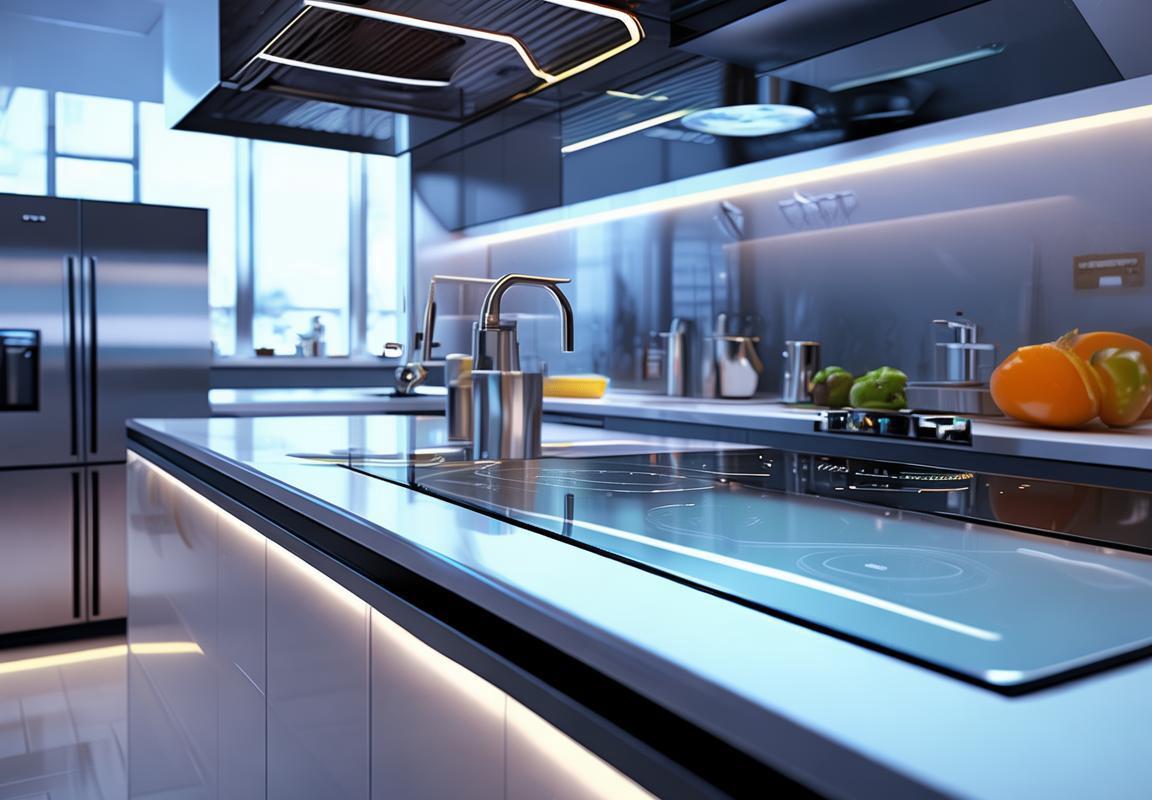
TheUL197Standard:APillarofSafetyandQuality
The UL 197 standard stands as a beacon of safety and quality in the kitchen appliance industry, ensuring that products meet stringent criteria for performance and reliability. This comprehensive standard covers a wide array of commercial kitchen equipment, from ovens and ranges to grills and fryers, and its influence is felt across both Europe and North America.
At its core, UL 197 is designed to protect users and their property from potential hazards associated with commercial kitchen appliances. It encompasses electrical safety, structural integrity, thermal protection, and user accessibility, among other critical factors. The standard is meticulously crafted to address the unique demands of commercial kitchens, where the stakes are higher due to the volume of use and the potential for accidents.
One of the key aspects of UL 197 is its emphasis on electrical safety. It mandates that appliances are designed to prevent electrical shocks, fires, and other electrical hazards. This includes rigorous testing of insulation, grounding, and the use of appropriate wiring and components. By adhering to these guidelines, manufacturers can ensure that their products are not only safe to use but also compliant with local and international regulations.
The thermal protection requirements of UL 197 are equally crucial. Commercial kitchen appliances often operate at high temperatures, and the standard ensures that these devices have adequate heat dissipation and protection against overheating. This is particularly important for appliances like grills and fryers, where the risk of fire is heightened. The standard also covers the use of heat-resistant materials and the design of safety features that can prevent thermal burns to users.
Another vital component of UL 197 is the focus on structural integrity. Appliances must be robust enough to withstand the demands of a commercial kitchen environment, including regular cleaning and the potential for misuse. The standard outlines the requirements for the construction of appliances, ensuring that they are durable and can maintain their functionality over time.
Accessibility is a cornerstone of UL 197, recognizing that ease of use can significantly reduce the risk of accidents. The standard includes guidelines for the placement of controls, the design of handles and switches, and the overall ergonomics of the appliance. This not only enhances safety but also improves the efficiency of kitchen operations.
The UL 197 standard also addresses the potential for water damage, a common issue in kitchen environments. It specifies the requirements for water-resistant components and the design of appliances to prevent water from entering critical areas. This is particularly important for appliances like dishwashers and refrigerators, which are frequently exposed to moisture.
In addition to these technical aspects, UL 197 also considers the environmental impact of kitchen appliances. It encourages the use of sustainable materials and energy-efficient designs, aligning with the growing trend of eco-friendly products in the market.
The standard’s impact is not limited to the products themselves; it also influences the supply chain. Manufacturers must ensure that all components and materials used in the production of their appliances meet the UL 197 criteria. This often requires certifications from suppliers, adding an additional layer of quality control.
In Europe and North America, the UL 197 standard is widely recognized and respected. It serves as a benchmark for safety and quality, and many consumers and businesses look for the UL mark when making purchasing decisions. The standard’s global recognition also means that appliances certified to UL 197 can often be sold internationally, providing manufacturers with a competitive edge.
The evolution of the UL 197 standard reflects the changing landscape of kitchen appliance technology. As new materials and technologies emerge, the standard adapts to ensure that appliances remain safe and effective. This includes the integration of smart features, which must also meet the safety requirements set forth by UL 197.
In conclusion, the UL 197 standard is more than just a set of regulations; it is a commitment to safety, quality, and reliability in the kitchen appliance industry. Its comprehensive approach to ensuring the safety of users and their property makes it an indispensable tool for manufacturers and consumers alike. As the industry continues to evolve, the role of UL 197 in shaping the future of kitchen appliances remains a steadfast pillar of excellence.
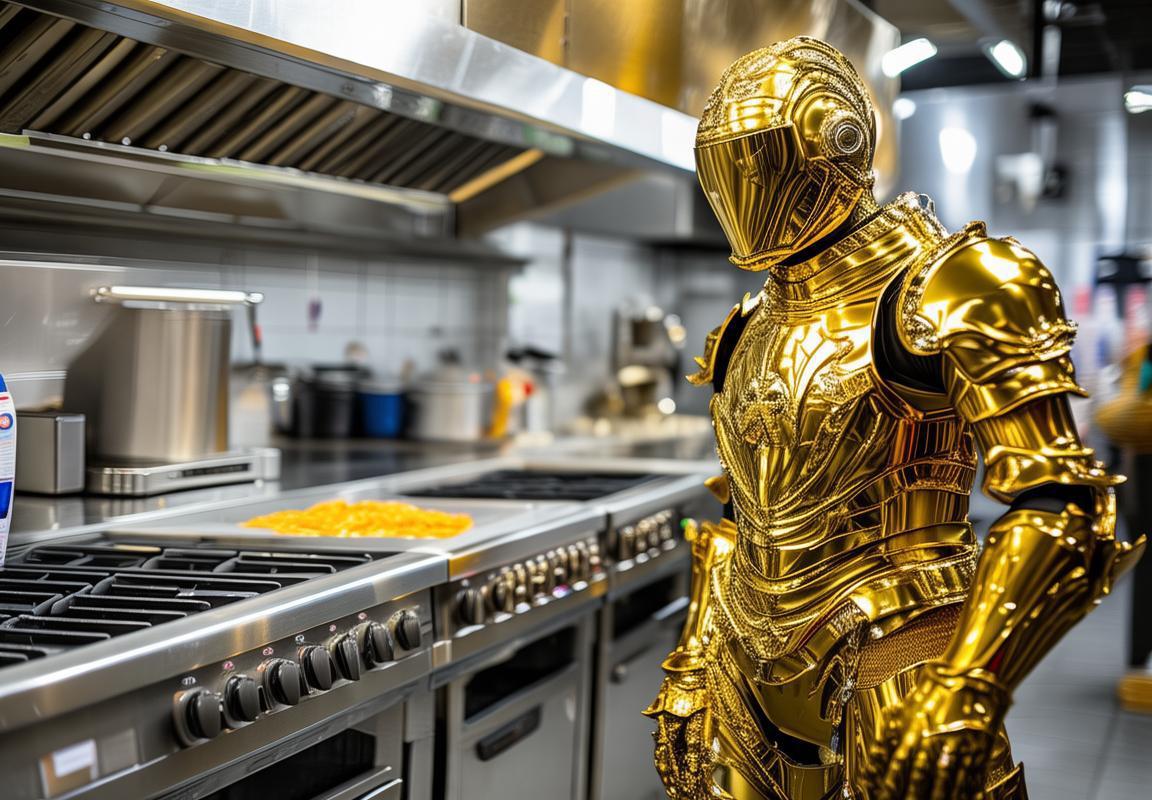
EuropeanMarketDynamics
The European kitchen appliance market is a vibrant and sophisticated sector, characterized by a blend of traditional and cutting-edge innovations. From compact kitchenettes in urban apartments to grand kitchens in rural homes, the demand for efficient, stylish, and safe appliances is ever-growing. Here’s a closer look at the dynamics shaping this market.
Consumer preferences vary widely across Europe, with some countries valuing energy efficiency and eco-friendly features, while others prioritize design and technology. For instance, in Germany, the emphasis is on high-quality, durable appliances, often with smart features. In contrast, Italy and Spain lean towards aesthetically pleasing designs that complement the Mediterranean lifestyle.
German manufacturers like Miele and Bosch have long dominated the market with their premium products, but they face increasing competition from Asian brands such as Samsung and LG, which are known for their innovative and cost-effective offerings. These companies are investing heavily in research and development to capture a larger share of the European market.
In France, kitchen appliances are not just tools for cooking; they are a statement of culinary art and home decor. French consumers appreciate the blend of traditional craftsmanship and modern technology. Brands like Gaggenau and Thermador have capitalized on this by offering high-end appliances that cater to the discerning tastes of French homeowners.
The UK market has seen a surge in interest in smart kitchen appliances, driven by the tech-savvy consumer base and the desire for greater convenience and control. The integration of appliances with smart home systems is becoming more common, with brands like Siemens and Whirlpool leading the charge in this area.
Swedish companies, known for their commitment to sustainability, are also making waves in the European market. IKEA, for example, offers a range of affordable and eco-friendly kitchen appliances that are highly sought after by environmentally conscious consumers.
Energy efficiency remains a critical factor in the European market, influenced by stringent regulations and consumer awareness. The European Union’s Energy Labeling Directive has played a significant role in promoting energy-saving appliances. As a result, manufacturers are focusing on developing more efficient models that not only reduce energy consumption but also lower running costs for consumers.
The rise of online shopping has had a profound impact on the European kitchen appliance market. Consumers now have access to a wider range of products from various international brands, and they can compare prices and features with ease. This has led to increased competition and has forced local retailers to offer better deals and services to retain customers.
Another trend in the European market is the rise of niche players. Smaller companies specializing in specific types of appliances, such as induction cooktops or wine cellars, are gaining popularity. These niche markets often cater to specific consumer needs or preferences, which allows them to carve out a unique position in the market.
Lastly, the integration of health and wellness into kitchen appliances is becoming more prevalent. For example, there is an increasing demand for steam ovens and air fryers, which offer healthier cooking options. Brands that can tap into this trend and offer innovative products will likely see a boost in sales.
In conclusion, the European kitchen appliance market is dynamic and evolving, with a diverse range of consumer preferences and market trends. As technology advances and consumer awareness grows, manufacturers must continue to innovate and adapt to meet the changing demands of European consumers.
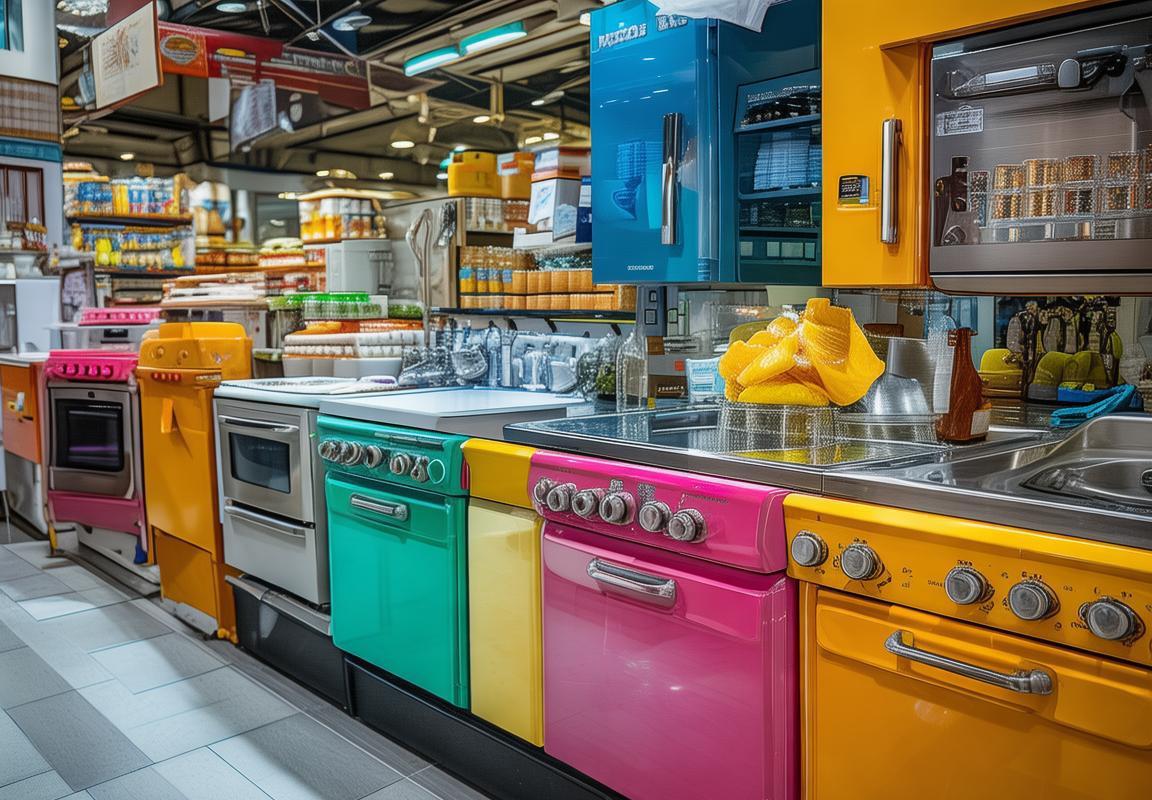
AmericanMarketTrends
The American kitchen appliance market is a dynamic and ever-evolving landscape, characterized by a blend of innovation, consumer demand, and regulatory compliance. Here’s a closer look at some of the key trends shaping this market:
In the heart of the American kitchen, smart appliances are becoming more than just a luxury; they’re becoming a necessity. From refrigerators that can order groceries to ovens that can be controlled via smartphone, the integration of technology into kitchen appliances is reshaping user expectations.
Energy efficiency remains a critical factor in the appliance market. With rising energy costs and growing environmental concerns, consumers are gravitating towards appliances that not only save money on utility bills but also have a smaller carbon footprint. The adoption of ENERGY STAR-certified appliances is on the rise, reflecting a commitment to sustainability.
Appliance manufacturers are focusing on design more than ever before. The kitchen is no longer just a functional space; it’s a hub for entertainment and socializing. Sleek lines, minimalist aesthetics, and customizable finishes are becoming standard features, as consumers seek appliances that complement their kitchen’s aesthetic.
The trend towards multifunctionality is undeniable. Single-purpose appliances are giving way to versatile devices that can perform multiple tasks. For example, a single oven that can broil, bake, and even dehydrate is becoming increasingly popular, as it offers greater convenience and space savings.
The American kitchen is also seeing a surge in the popularity of induction cooktops. These cooktops provide precise temperature control, quick heating, and safety features like cool-to-the-touch surfaces. As consumers become more health-conscious, the appeal of induction cooking, which is healthier than traditional electric or gas, is growing.
Customization is no longer just for cars and phones; it’s now a feature in kitchen appliances as well. Consumers can choose from a variety of colors, finishes, and even materials for their appliances to match their personal style and kitchen decor.
The influence of social media and online reviews is undeniable. Before purchasing a new appliance, many consumers turn to platforms like Yelp, Amazon, and social media to read reviews and gather recommendations. This trend has led to an increased focus on customer service and product quality, as manufacturers know that satisfied customers are more likely to share positive experiences.
The rise of eco-friendly appliances is not just a trend; it’s a reflection of broader societal values. As consumers become more environmentally conscious, they’re looking for appliances that are not only energy-efficient but also made from sustainable materials. Recycled plastics, bio-based resins, and other eco-friendly materials are becoming more common in appliance construction.
The demand for smart kitchen appliances is not just driven by convenience; it’s also about data and analytics. Many modern appliances can collect data on usage patterns, which can be used to optimize performance and even predict maintenance needs. This data-driven approach is changing how manufacturers design and market their products.
Lastly, the rise of online shopping has had a significant impact on the appliance market. Consumers are increasingly comfortable with buying major appliances online, and this trend is expected to continue as more retailers offer detailed product information, customer reviews, and even virtual kitchen appliance showrooms.
In summary, the American kitchen appliance market is characterized by a focus on smart technology, energy efficiency, design, multifunctionality, and sustainability. As consumer preferences continue to evolve, so too will the products available on the market, reflecting a commitment to innovation and meeting the changing needs of the consumer.
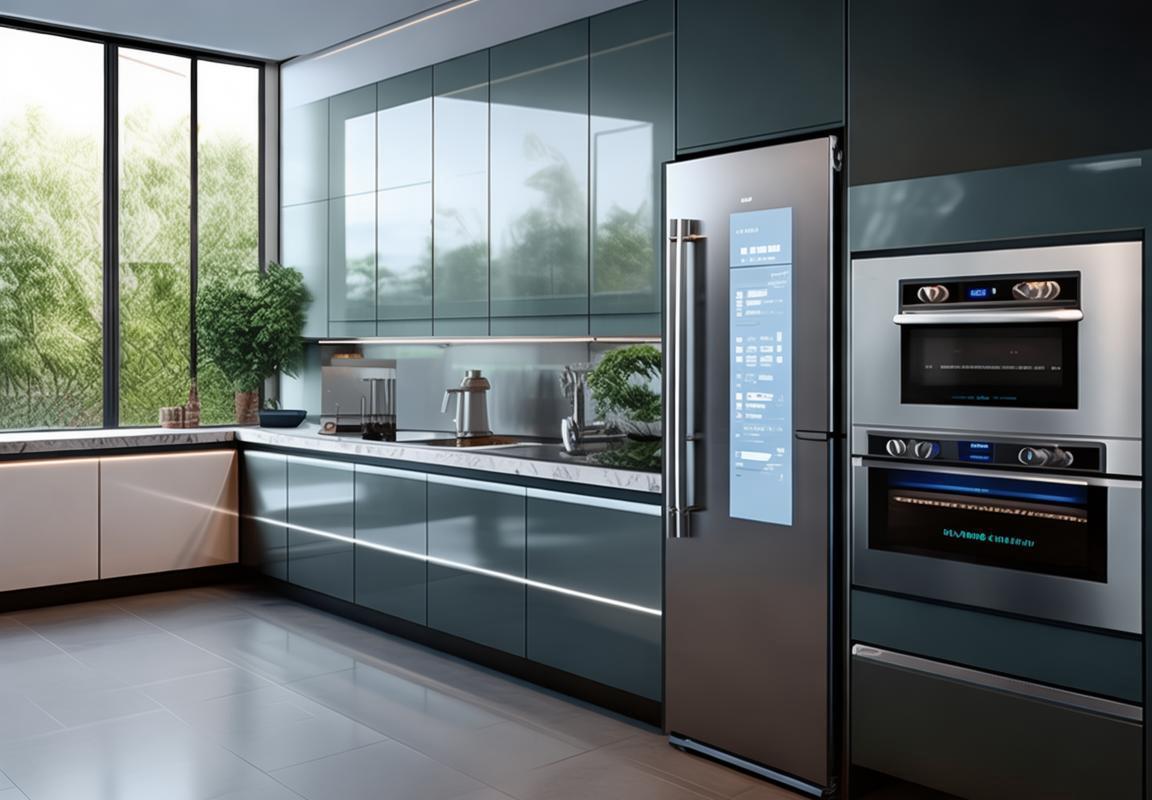
TheImpactofUL197onInnovationandDesign
The integration of the UL 197 commercial standard has significantly influenced the landscape of kitchen appliance innovation and design. This rigorous safety certification has not only raised the bar for product quality but has also spurred a wave of technological advancements and design transformations within the industry.
In recent years, manufacturers have embraced the UL 197 standard to enhance the safety features of their appliances. This has led to the incorporation of advanced technologies that not only protect users but also improve the overall performance and user experience. For instance, smart sensors and automated safety shut-offs are now commonplace in kitchen appliances, offering an extra layer of protection against potential hazards.
One notable impact is the shift towards modular design. Appliance components are now often designed to be easily replaceable or upgradeable, ensuring that products remain compliant with the UL 197 standard while also allowing for the integration of new technologies. This flexibility has become crucial as manufacturers look to adapt to the evolving needs of consumers and the market.
The standard has also pushed designers to think creatively about space and utility. Compact appliances that still meet the stringent safety requirements of UL 197 have become more popular, catering to the trend of smaller living spaces and open-concept kitchens. This has led to innovations like countertop ovens that combine the functionality of a traditional oven with the convenience of a compact footprint.
Another significant development is the emphasis on material durability and sustainability. As the UL 197 standard mandates rigorous testing for product longevity, manufacturers are investing in high-quality materials that not only meet safety standards but also reduce the environmental impact of their products. This includes the use of recyclable materials and energy-efficient components.
The standard has also accelerated the adoption of user-friendly interfaces. Manufacturers are focusing on intuitive controls and interfaces that make appliances safer and easier to operate. This is particularly evident in smart kitchen appliances, where the integration of voice assistants and touchscreens has been made safer through the adherence to UL 197’s stringent guidelines.
Moreover, the UL 197 standard has influenced the way appliances are tested and certified. This has led to the development of more sophisticated testing equipment and methodologies, ensuring that every appliance that carries the certification has been thoroughly evaluated. This rigorous testing process has, in turn, motivated manufacturers to invest in continuous improvement and innovation.
The impact of UL 197 on design can also be seen in the rise of multi-functional appliances. Combining multiple features into a single device not only saves space but also reduces the complexity of kitchen layouts. For example, induction cooktops that can switch between different power levels and cooking modes offer versatility that was once only available through a series of separate appliances.
Lastly, the standard has spurred a culture of transparency and accountability within the industry. Consumers are now more informed about the safety features of the appliances they purchase, thanks to the clear labeling and certification process. This has not only increased trust in the brands but has also encouraged manufacturers to prioritize safety in their design and production processes.
In summary, the UL 197 commercial standard has become a cornerstone for innovation and design in the kitchen appliance industry. By demanding high levels of safety, quality, and sustainability, it has pushed manufacturers to push boundaries, resulting in a market that offers safer, more efficient, and user-friendly products.
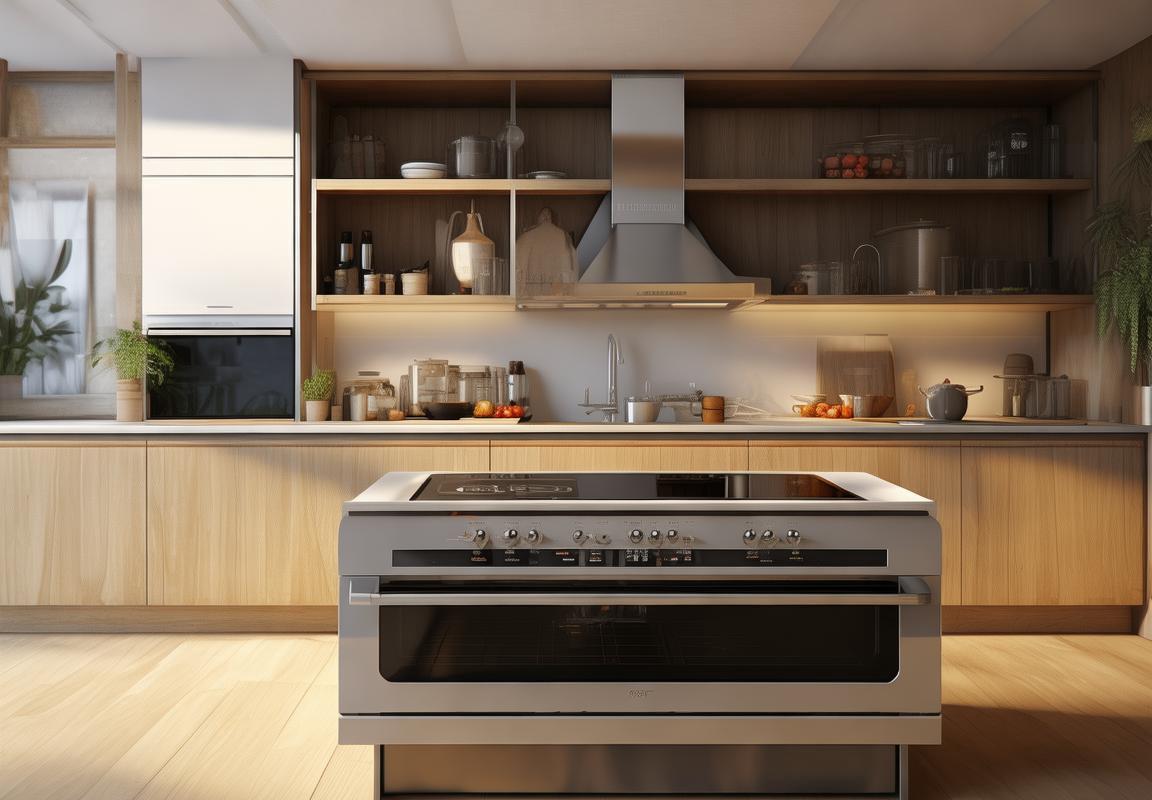
RegulatoryCompliance:AMustforMarketEntry
Navigating the complexities of international markets requires a keen understanding of the regulatory landscapes that govern product entry. For kitchen appliance manufacturers looking to break into new territories, regulatory compliance is not just a checkbox; it’s a cornerstone of successful market entry. Here’s a deeper look into why this is so crucial.
Understanding the Landscape
The regulatory environment varies greatly from one region to another, and the kitchen appliance industry is no exception. Different countries have their own standards and certifications that manufacturers must adhere to. In the case of the United States, the Underwriters Laboratories (UL) 197 standard is a key benchmark that can significantly impact market entry.
UL 197: A Gateway to the U.S. Market
The UL 197 standard is specifically designed for commercial kitchen appliances and equipment. It covers a wide range of safety requirements, from electrical and thermal hazards to mechanical and structural integrity. Compliance with this standard is not just about meeting a set of regulations; it’s about ensuring that appliances are safe for use in professional kitchens, which can be a high-risk environment.
Building Trust with Consumers
Regulatory compliance is not just about safety; it’s also about building trust with consumers. When a kitchen appliance carries the UL 197 certification, it signals to the end-user that the product has been rigorously tested and meets stringent safety standards. This can be a deciding factor in a consumer’s choice, especially in a market where safety concerns are paramount.
Navigating the Certification Process
The process of obtaining UL 197 certification can be daunting. It involves extensive testing, documentation, and sometimes redesigning products to meet the standard’s requirements. However, the effort is often worth it, as the certification can open doors to new markets and provide a competitive edge.
International Manufacturers and Regulatory Hurdles
For international manufacturers, understanding and complying with local regulations can be a significant challenge. The language barrier, cultural differences, and the sheer volume of regulations can make it difficult to navigate. However, with the right resources and partnerships, these hurdles can be overcome.
The Role of Distributors and Partners
Local distributors and partners play a crucial role in helping international manufacturers navigate the regulatory landscape. They often have a deep understanding of the local market and can provide valuable insights into the necessary certifications and compliance requirements.
The Impact on Pricing and Product Development
Regulatory compliance can have a direct impact on pricing and product development. For example, the cost of obtaining certifications like UL 197 can be substantial, and these costs are often passed on to consumers. However, investing in compliance can also lead to better product design, as manufacturers are forced to consider safety and quality at every stage of the development process.
Global Trends and Changing Regulations
The regulatory landscape is not static. Global trends, technological advancements, and shifts in consumer behavior can all influence the regulations that manufacturers must adhere to. Keeping up with these changes is essential for staying compliant and competitive.
Case Studies: Success Stories and Lessons Learned
There are numerous examples of both successes and failures when it comes to regulatory compliance. For instance, a manufacturer that invests heavily in compliance and certification may find that their products are more appealing to consumers, leading to increased sales. Conversely, a company that ignores regulatory requirements may face penalties, fines, and a damaged reputation.
The Importance of Proactive Compliance
Instead of waiting for regulations to change or for a compliance issue to arise, proactive compliance is the key to successful market entry. This involves staying informed about regulatory changes, planning for compliance from the outset of product development, and maintaining ongoing compliance throughout the product lifecycle.
Conclusion
Regulatory compliance is not just a necessary evil for market entry; it’s an essential part of building a successful business in the global kitchen appliance market. By understanding the landscape, investing in certifications, and staying proactive, manufacturers can navigate the complexities and thrive in new markets.

ConsumerTrustandBrandReputation
In today’s competitive marketplace, consumer trust and brand reputation are invaluable assets. The relationship between the two is intricate, with trust often serving as the foundation upon which a brand’s reputation is built. Here’s a closer look at how these elements intertwine, particularly in the context of kitchen appliances.
Consumer trust is fostered through a combination of factors that include product quality, reliability, and adherence to safety standards. In the kitchen appliance industry, where safety is paramount, brands that prioritize these aspects tend to gain a loyal customer base. For instance, a kitchen appliance that consistently performs as advertised and is certified by respected safety organizations like UL can significantly boost consumer confidence.
Brand reputation, on the other hand, is the perception that consumers hold of a brand. It’s shaped by a variety of experiences, from the initial product purchase to ongoing customer service and support. A strong reputation can open doors to new markets and customer segments, as it often precedes a brand in the minds of potential buyers.
When it comes to kitchen appliances, the connection between consumer trust and brand reputation is particularly strong due to the nature of the product. These appliances are not just tools; they are integral to daily life, influencing cooking experiences and home aesthetics. Here’s how trust and reputation are cultivated and maintained:
Consistent Quality ControlBrands that maintain stringent quality control processes are more likely to earn consumer trust. This involves rigorous testing of products to ensure they meet or exceed safety and performance standards. When consumers know that a brand’s appliances are reliable, they are more likely to recommend them to others, thus enhancing the brand’s reputation.
Safety Standards and CertificationsSafety is a cornerstone of consumer trust, especially in the kitchen. Brands that prioritize safety and obtain certifications from recognized bodies like UL 197 are sending a clear message to consumers that their products are safe to use. This not only protects the consumer but also reinforces the brand’s reputation for quality and responsibility.
Customer Service and SupportExcellent customer service can turn a satisfied customer into a loyal advocate for a brand. When consumers have issues with their appliances, prompt and effective support can make all the difference. Brands that go the extra mile to resolve problems and ensure customer satisfaction are more likely to build a strong reputation over time.
Innovation and SustainabilityConsumers are increasingly looking for appliances that are not only high-performing but also environmentally friendly. Brands that innovate in these areas and communicate their commitment to sustainability can earn a positive reputation and build trust with eco-conscious consumers.
Marketing and BrandingHow a brand presents itself in the marketplace also plays a significant role in shaping its reputation. Authentic and transparent marketing messages that align with the brand’s values can resonate with consumers, fostering trust and reinforcing the brand’s image.
Social ResponsibilityA brand’s social responsibility initiatives can also impact consumer trust and reputation. When a brand is seen as contributing positively to society, through charitable efforts or ethical business practices, it can enhance its image and build a stronger connection with its customers.
Word of MouthThe power of word-of-mouth cannot be overstated. Satisfied customers are more likely to share their positive experiences with friends and family, leading to organic growth in brand reputation. Conversely, negative experiences can spread quickly, damaging a brand’s reputation.
Loyalty Programs and FeedbackLoyalty programs that reward customers for their continued support can foster a sense of community and loyalty. Additionally, actively seeking and responding to customer feedback can show that a brand values its customers’ opinions and is committed to improving its products and services.
In conclusion, the relationship between consumer trust and brand reputation in the kitchen appliance industry is a symbiotic one. Trust is earned through consistent quality, safety, and customer service, while a strong reputation can amplify this trust and attract new customers. Brands that understand and leverage this dynamic are well-positioned to thrive in a competitive market.
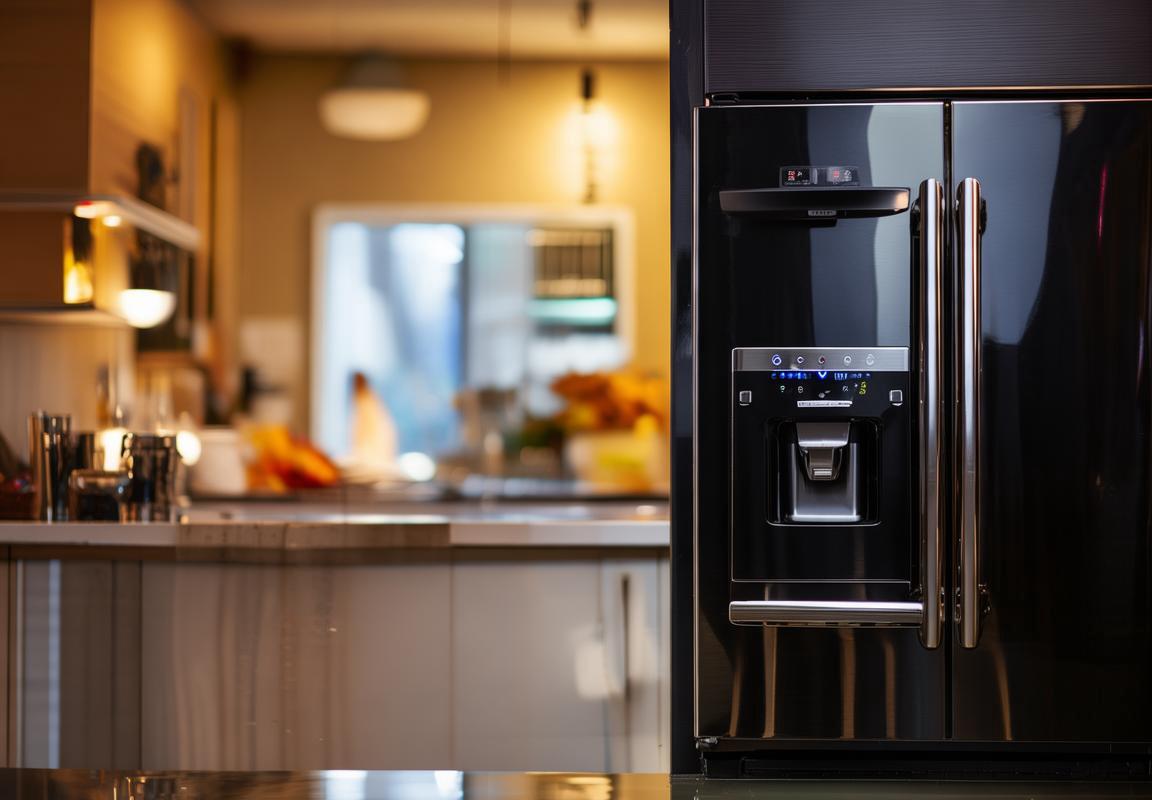
PredictionsfortheFuture
In the ever-evolving landscape of kitchen appliance technology, predicting the future is a challenging yet exciting endeavor. As we look ahead, several key trends and shifts are poised to reshape the industry. Here’s a glimpse into what might be in store for the next decade.
The integration of smart technology continues to gain momentum, with appliances becoming more connected and capable of providing personalized experiences. Imagine a refrigerator that not only keeps your food fresh but also suggests recipes based on its contents or a stove that adjusts its heat to the perfect temperature for the dish you’re preparing. The convergence of kitchen appliances with the Internet of Things (IoT) promises a more intuitive and efficient culinary experience.
Energy efficiency remains a critical focus, driven by environmental concerns and the rising cost of utilities. Manufacturers are under increasing pressure to produce appliances that consume less energy without compromising performance. This push for sustainability is likely to lead to the development of new materials and technologies that are not only more energy-efficient but also more environmentally friendly throughout their lifecycle.
Sustainability isn’t just about energy; it’s also about the materials used in appliances. The shift towards sustainability is prompting appliance brands to explore alternative materials, such as recycled plastics and sustainable metals. This not only reduces the environmental impact but also aligns with consumer values, especially among younger demographics who are increasingly conscious of their ecological footprint.
Customization is another trend that’s likely to grow. Consumers are no longer satisfied with one-size-fits-all solutions. They want appliances that can be tailored to their specific needs and preferences. This could mean adjustable settings, modular designs, or even appliances that can be integrated into custom kitchen layouts. The future kitchen may look less like a uniform array of appliances and more like a personalized ecosystem.
The rise of eco-conscious consumers is also influencing the market. Brands that prioritize sustainability and ethical practices are gaining traction. This includes not only the materials used but also the manufacturing processes, labor conditions, and the overall impact on the environment. As consumers become more educated about these issues, they’re more likely to support brands that align with their values.
Innovation isn’t limited to the products themselves; it’s also about the way they’re sold and serviced. Direct-to-consumer models are becoming more prevalent, offering customers the opportunity to purchase appliances online without the need for middlemen. This shift is likely to continue, with brands investing in robust e-commerce platforms and customer service teams to support these new purchasing channels.
Appliance repair and maintenance are also evolving. With the introduction of smart appliances, the ability to diagnose and fix issues remotely is becoming more common. This not only saves time and money but also reduces the environmental impact of shipping and disposing of faulty appliances.
As we look further into the future, there’s a growing trend towards appliances that not only enhance efficiency and sustainability but also promote health and wellness. For example, refrigerators could include features that monitor and optimize the quality of stored food, or kitchen ranges might have sensors that detect the presence of harmful gases and automatically shut off the stove.
The future of kitchen appliances is also likely to be influenced by demographic shifts. As the global population ages, there will be an increased demand for appliances that cater to older adults, such as those with larger, more accessible controls or features that can be controlled remotely.
In conclusion, the future of kitchen appliances is one of innovation, sustainability, personalization, and connectivity. It’s a future where appliances are not just tools but integral components of our daily lives, seamlessly integrated into our homes and our routines. The brands that adapt to these changes and lead the way in innovation will be the ones that capture the market’s imagination and loyalty.

Conclusion:TheUL197StandardasaGlobalBenchmark
In the ever-evolving landscape of kitchen appliances, the adoption of standards like the UL 197 has become a cornerstone for manufacturers and consumers alike. As we stand at the intersection of innovation and safety, it’s clear that the future of kitchen appliances will be shaped by stringent regulatory frameworks and consumer expectations. The UL 197 standard, specifically designed for commercial kitchen appliances, has not only set a benchmark for safety and quality but has also spurred innovation and design changes that cater to both efficiency and functionality. Let’s reflect on the current impact of this standard and ponder over the potential trajectory it might take in the years to come.
The integration of the UL 197 standard into appliance design has prompted manufacturers to rethink their approaches. Safety, once a secondary consideration, has now taken center stage. Appliance components are meticulously engineered to withstand the rigorous demands of commercial settings, from heavy-duty cooking to long hours of operation. This shift has not only enhanced the durability of appliances but has also led to more reliable and consistent performance.
One cannot overlook the influence of the UL 197 on energy efficiency. With environmental concerns at the forefront, appliance designers are now compelled to create products that are not only safe but also sustainable. This means incorporating energy-saving features and materials that reduce the carbon footprint. As a result, we’ve seen a surge in smart appliances that optimize energy usage and reduce costs over time.
Consumer expectations have also evolved significantly. Today’s buyers are not just looking for a reliable appliance; they’re seeking smart solutions that integrate seamlessly into their lives. The UL 197 standard has played a crucial role in enabling this transformation by ensuring that appliances meet the highest safety and performance criteria. As a result, manufacturers have been forced to innovate, leading to the development of advanced technologies that offer greater convenience and control.
In the realm of smart kitchens, the UL 197 has become a beacon of assurance. As appliances become more interconnected, the risk of electrical hazards increases. The standard acts as a safeguard against potential dangers, giving consumers peace of mind that their smart appliances are both safe and up to date with the latest technology. This trust is vital, as it paves the way for a more automated and integrated kitchen experience.
As we look to the future, the UL 197 standard will continue to influence the trajectory of kitchen appliance design and innovation. Here are some predictions that could shape the next wave of developments:
-
Enhanced Focus on Energy Efficiency: With climate change concerns intensifying, we can expect to see appliances that are not just energy-efficient but also adaptable to different energy sources, including renewable energy.
-
Greater Emphasis on Customization: Consumers will demand appliances that can be tailored to their specific needs. This could lead to a rise in modular designs and appliances that can be easily upgraded or replaced.
-
Advanced Connectivity and Integration: The Internet of Things (IoT) will play a bigger role in kitchen appliances. Appliances that can communicate with each other and with the consumer will become more prevalent, offering a more cohesive and user-friendly experience.
-
Sustainable and Eco-friendly Materials: As environmental consciousness grows, we’ll see a shift towards using more sustainable materials in appliance manufacturing, reducing the overall environmental impact.
-
Continuous Monitoring and Predictive Maintenance: Appliances of the future will be equipped with advanced diagnostics that can predict potential issues before they arise, ensuring uninterrupted operation and minimizing downtime.
-
Global Harmonization of Standards: As the world becomes more interconnected, we may see a trend towards harmonizing appliance safety standards globally, making it easier for manufacturers to export their products across borders.
In conclusion, the UL 197 standard has emerged as a global benchmark for safety and quality in kitchen appliances. Its impact on innovation and design is undeniable, and as we move forward, it will continue to shape the industry’s direction. The future of kitchen appliances is one of innovation, sustainability, and consumer-centric design, all underpinned by the robust standards set forth by the UL 197.